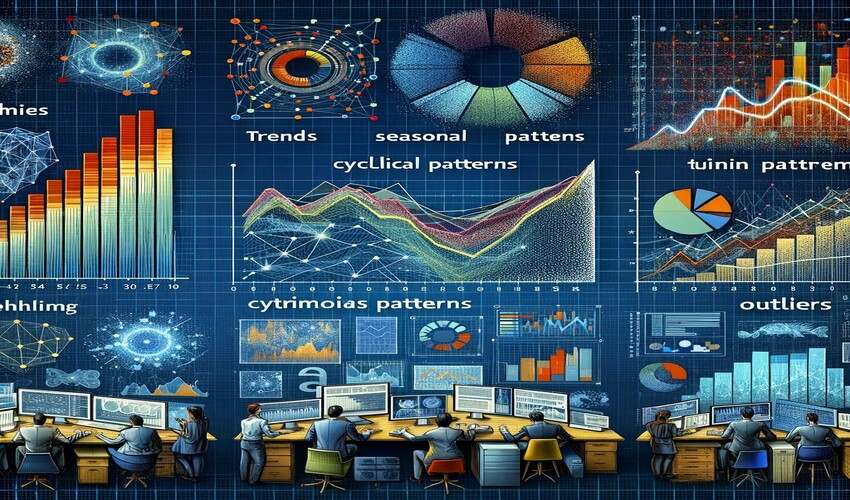The urgent need to address the environmental effects linked to old fashion practices drives the fashion industry’s extraordinary transformation toward sustainability. This endeavor has led to the fascinating research of soy protein and sustainable fashion junctions.
In addition to its nutritional benefits, soy protein is now being researched for its potential to revolutionize the fashion industry using sustainable materials and methods.
This in-depth blog intends to explore the relationship between soy protein and eco-friendly fashion, illuminating its unique qualities, existing uses, and the revolutionary potential it possesses for the world of fashion.
Soy Protein: A Versatile Biomaterial:
The abundantly produced soybeans used to make soy protein are a type of plant protein. You can get the best soy online from a reputable buyer by reading their reviews to ensure their reliability. The fashion business can benefit from this natural resource’s biodegradability, renewability, and minimal environmental effect, among other benefits.
Additionally, the sustainable farming practice of soy protein has natural qualities, including softness, breathability, and moisture absorption, making it a desirable biomaterial for manufacturing textiles and garments.
Soy Protein Fiber: A Sustainable Textile:
The invention of soy protein fibers is one of the most critical advancements in using soy protein in fashion. These fibers can be transformed into textiles that resemble natural materials like silk or wool by being spun and treated. The benefits of soy protein fibers include their antibacterial, UV-resistant, and hypoallergenic characteristics.
Their production uses less water and energy than traditional fabrics, lowering the fashion industry’s environmental impact.
Vegan Fashion:
Soy-based textiles have become a realistic choice for vegan fashion due to the rising popularity of veganism and the need for cruelty-free goods. The term “soy leather,” also referred to as “vegetable leather” or “soy skin,” refers to an alternative to conventional animal leather.
It may be used to make various fashion goods, including shoes, bags, and jackets, providing customers who value animal welfare with a kind and environmentally friendly option.
Soy-Based Fabrics and Blends:
Along with soy protein fibers, soy-based textiles, and blends are becoming increasingly popular. To improve their qualities, these textiles blend soy protein with other eco-friendly fibers like organic cotton, hemp, or bamboo. Applications for soy-based fabrics are diverse, ranging from apparel and accessories to home textiles.
The potential of soy protein in high-end fashion is demonstrated by designers and manufacturers increasingly adding these eco-friendly materials into their collections.
Low Carbon Footprint:
Sustainably using soy protein has several positive effects on the environment. Because they are a renewable resource, soybeans have a minor carbon impact than synthetic fiber production. Additionally, by reducing waste and closing the material loop, the soy protein waste produced during food production can be converted into textiles, advancing the circular economy.
Sustainable Design and Innovation:
Beyond only materials, soy protein and sustainable fashion are related. It includes cutting-edge products and design methodologies. Designers are experimenting with natural soybean colors to lessen their reliance on hazardous synthetic dyes.
Additionally, using leftover soy protein from food manufacturing to make textiles, the fashion sector may reduce waste overall and develop a circular economy.
Challenges and Future Outlook:
Some issues must be resolved even though the use of soy protein in sustainable apparel shows excellent promise. These include increasing production volume, enhancing fabric toughness, and improving manufacturing procedures.
Research and development initiatives are underway to overcome these challenges and realize soy protein’s full potential as a widely used sustainable textile.
Environmental Benefits and Circular Economy:
Sustainably using soy protein has several positive effects on the environment. Because they are a renewable resource, soybeans have a more minor carbon impact than synthetic fiber production. Additionally, by reducing waste and closing the material loop, the soy protein waste produced during food production can be converted into textiles, advancing the circular economy.
A more socially and environmentally conscious industry is possible thanks to the junction of soy protein and sustainable fashion.
Designers and businesses may help reduce the fashion industry’s environmental impact and encourage sustainable practices along the whole supply chain by investigating the potential of soy protein in the sector.
Bottomline
Because soy protein is renewable, biodegradable, and has a low environmental impact, it is an appealing replacement for conventional materials. The adaptability of soy protein fibers, whether used naturally or combined with other eco-friendly fibers, creates new opportunities for producing soft, long-lasting, and visually beautiful fabrics and textiles.
These materials can satisfy the needs of customers and designers looking for environmentally friendly alternatives without sacrificing aesthetics or functionality.
The study of natural colors derived from soy adds another layer to the relationship between soy protein and eco-friendly clothing. The fashion industry may cut its use of hazardous chemicals and reduce water pollution while still obtaining brilliant and diversified color selections by shifting away from harmful synthetic dyes and embracing natural substitutes from soybeans.
















Leave a Reply